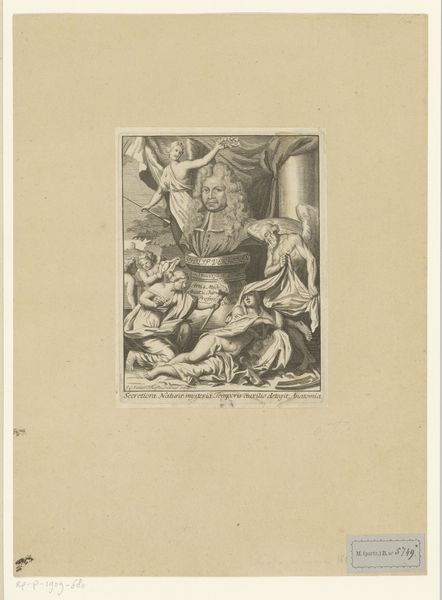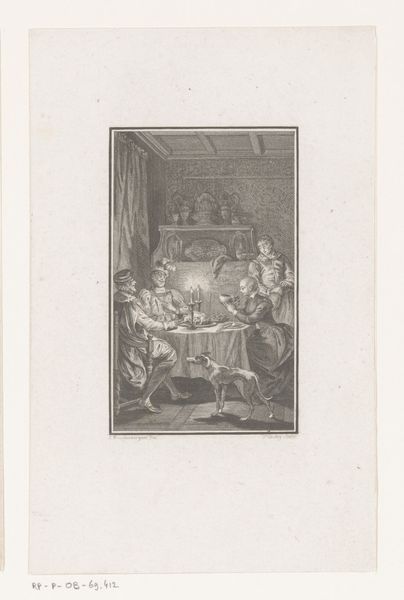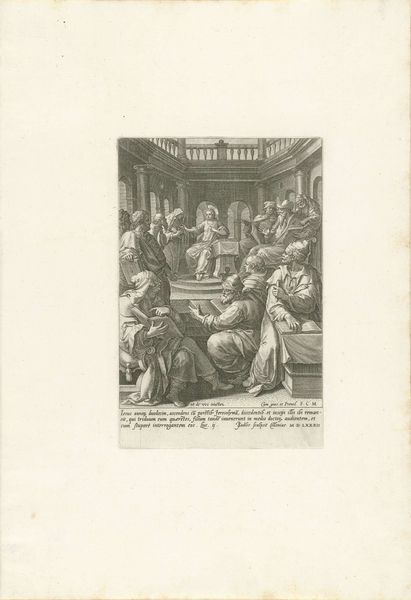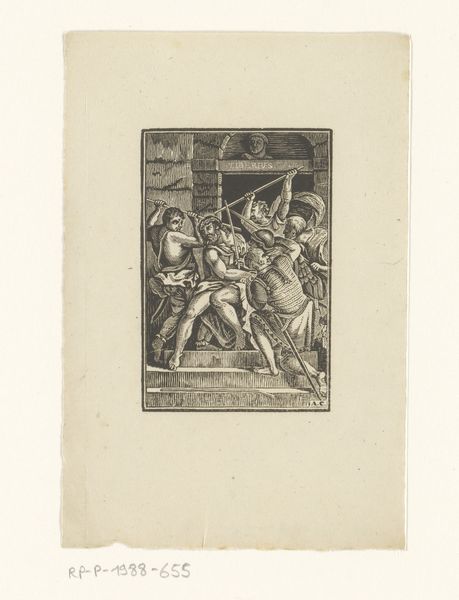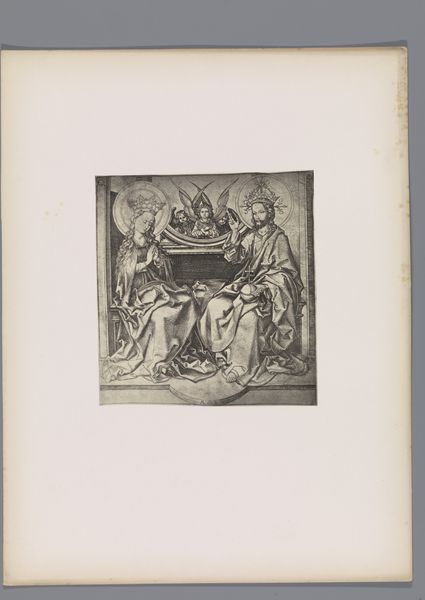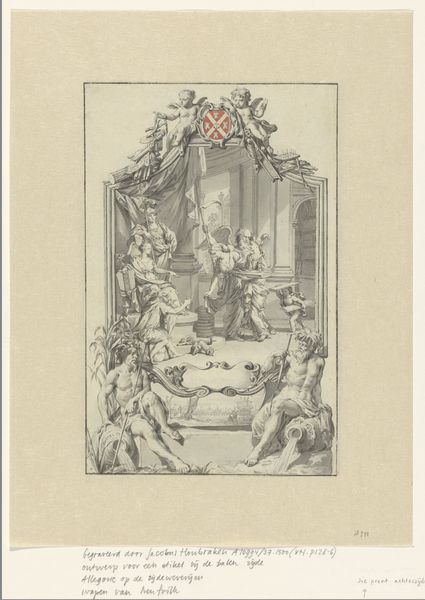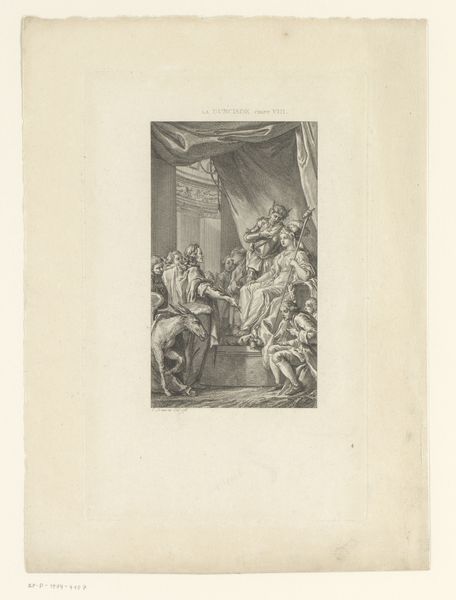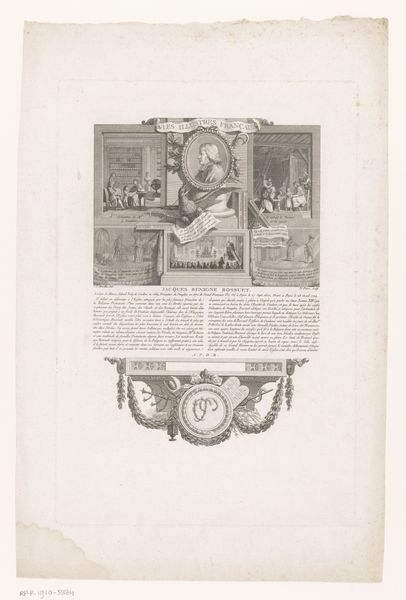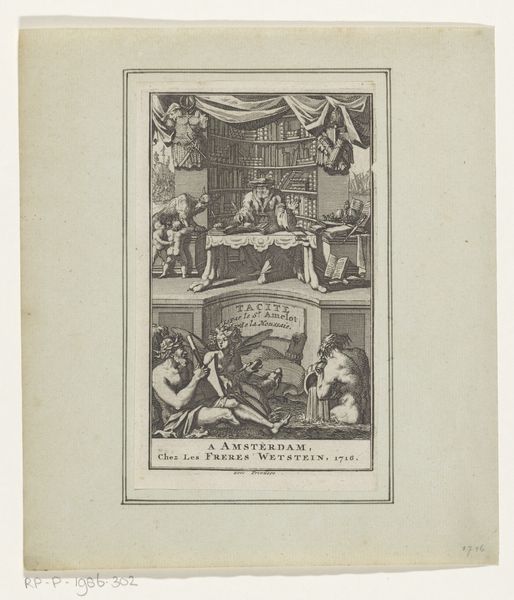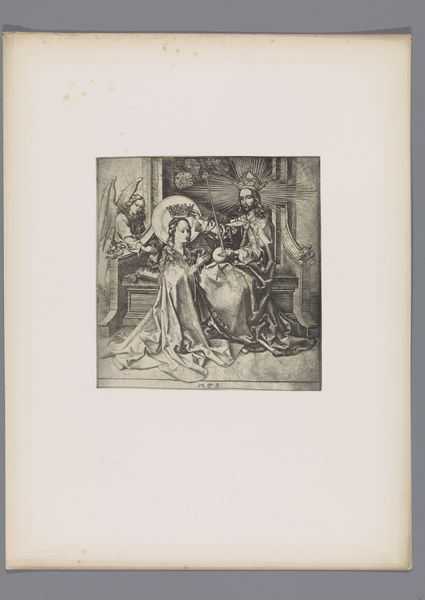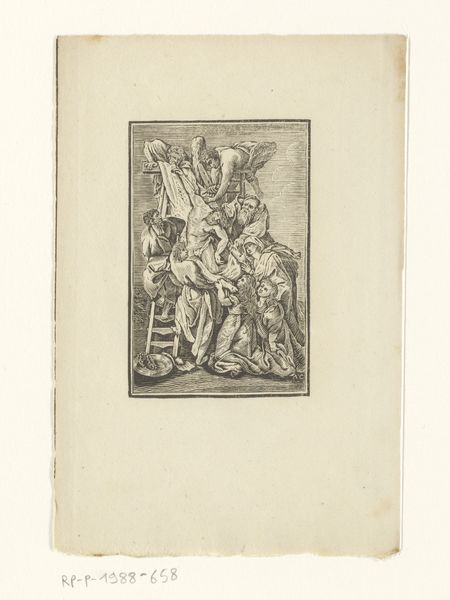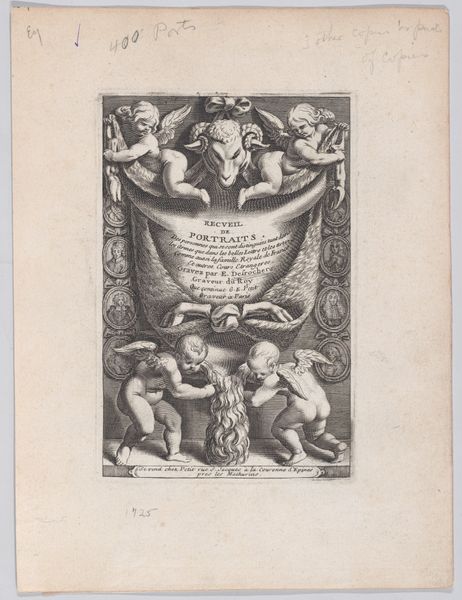
Dimensions: height 65 mm, width 50 mm
Copyright: Rijks Museum: Open Domain
Editor: We’re looking at “Card Player and Death” by Hans Holbein the Younger, created in 1547. It’s a small woodcut, full of very fine lines, depicting a scene of men gambling, seemingly oblivious to the death and devils hovering over them. What strikes me most is the almost casual way death is portrayed; not as a fearsome reaper but like just another player at the table. How do you interpret this work? Curator: This piece is a powerful commentary on societal inequalities and the pervasiveness of death, isn't it? Holbein lived during a time of immense social upheaval. The Black Death had ravaged Europe, and stark divisions in class meant that some people were far more shielded from mortality than others. How does the presence of Death, literally at the gambling table, challenge the existing power structures within the composition? Editor: It's definitely leveling, but do you think it offers some hope for the underdog in the face of a fatalistic endgame? Curator: That’s a very astute point. Does Holbein perhaps critique not just societal structures but also offer a reflection on individual choices amidst these circumstances? Where does the possibility for agency lie when existence can feel precarious and predetermined by fate? Editor: I never considered that it could be offering a way forward, through conscious living in the face of adversity. I was so caught up in how grim it seemed! Curator: Exactly. We often overlook the potential for agency even within systems of oppression and suffering, and to remember that potential is a lesson we can still draw from this image today. Editor: Looking at it now, I can see so many layers. Thank you for sharing this. Curator: My pleasure! The layers reveal so much about then, but maybe even more about us today.
Comments
No comments
Be the first to comment and join the conversation on the ultimate creative platform.
